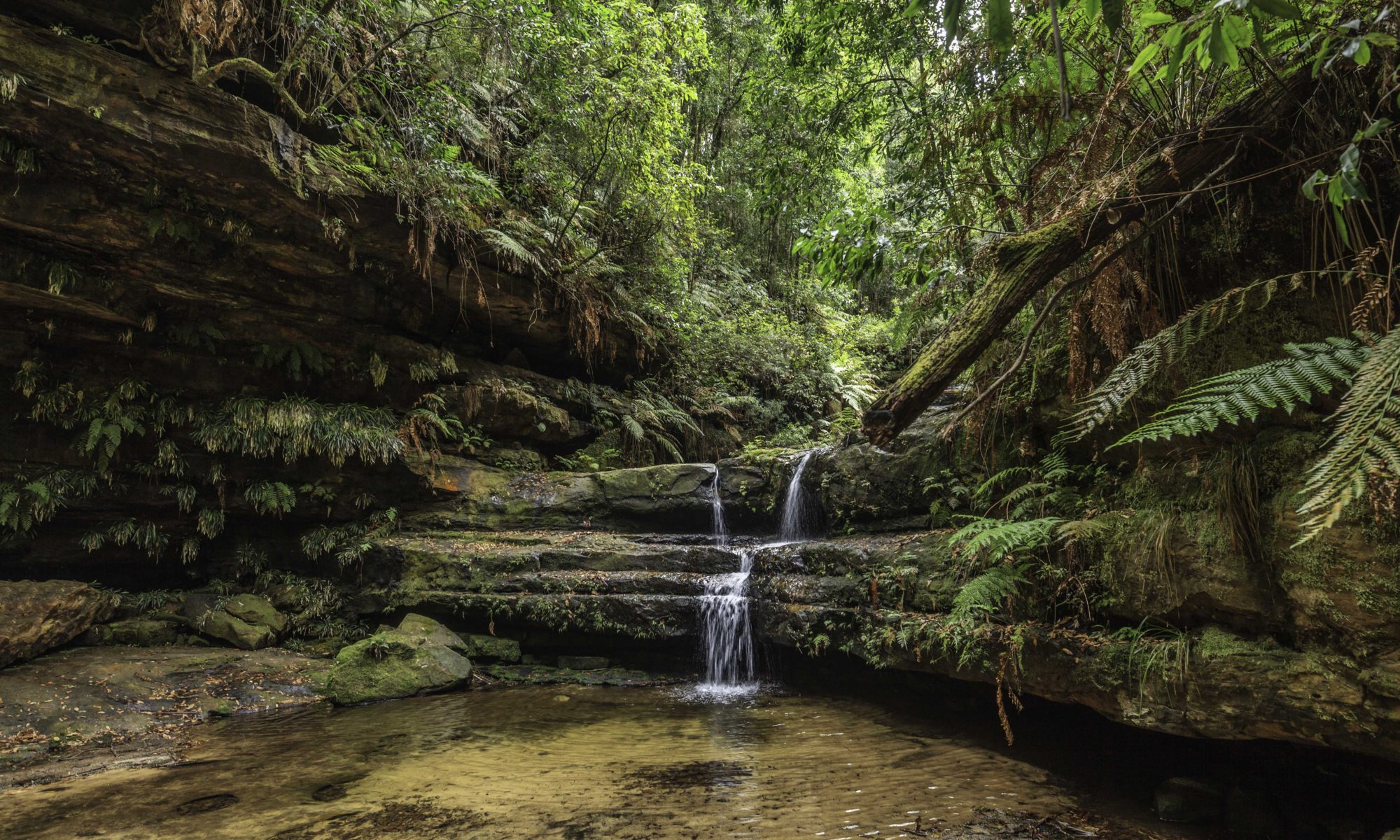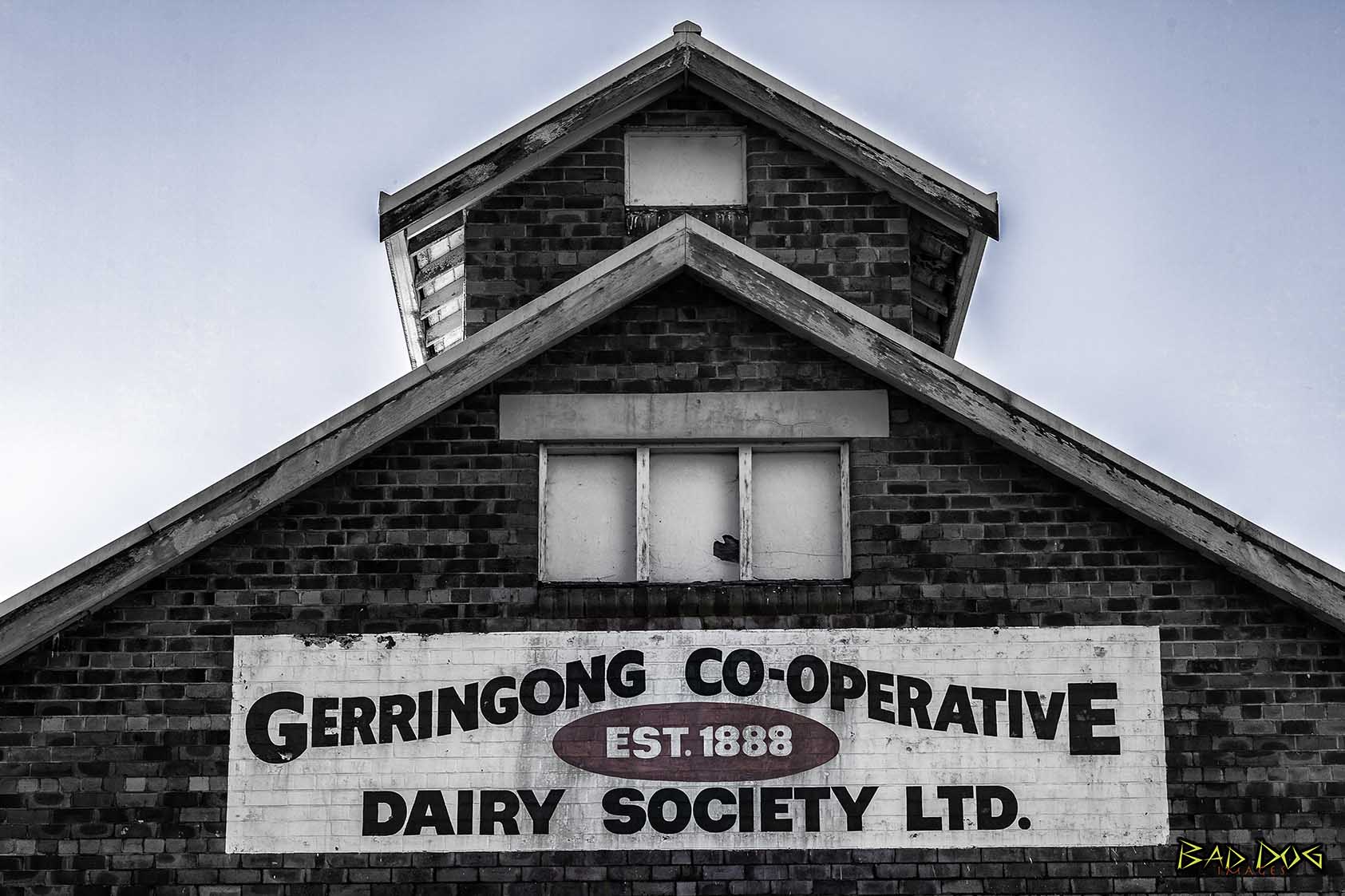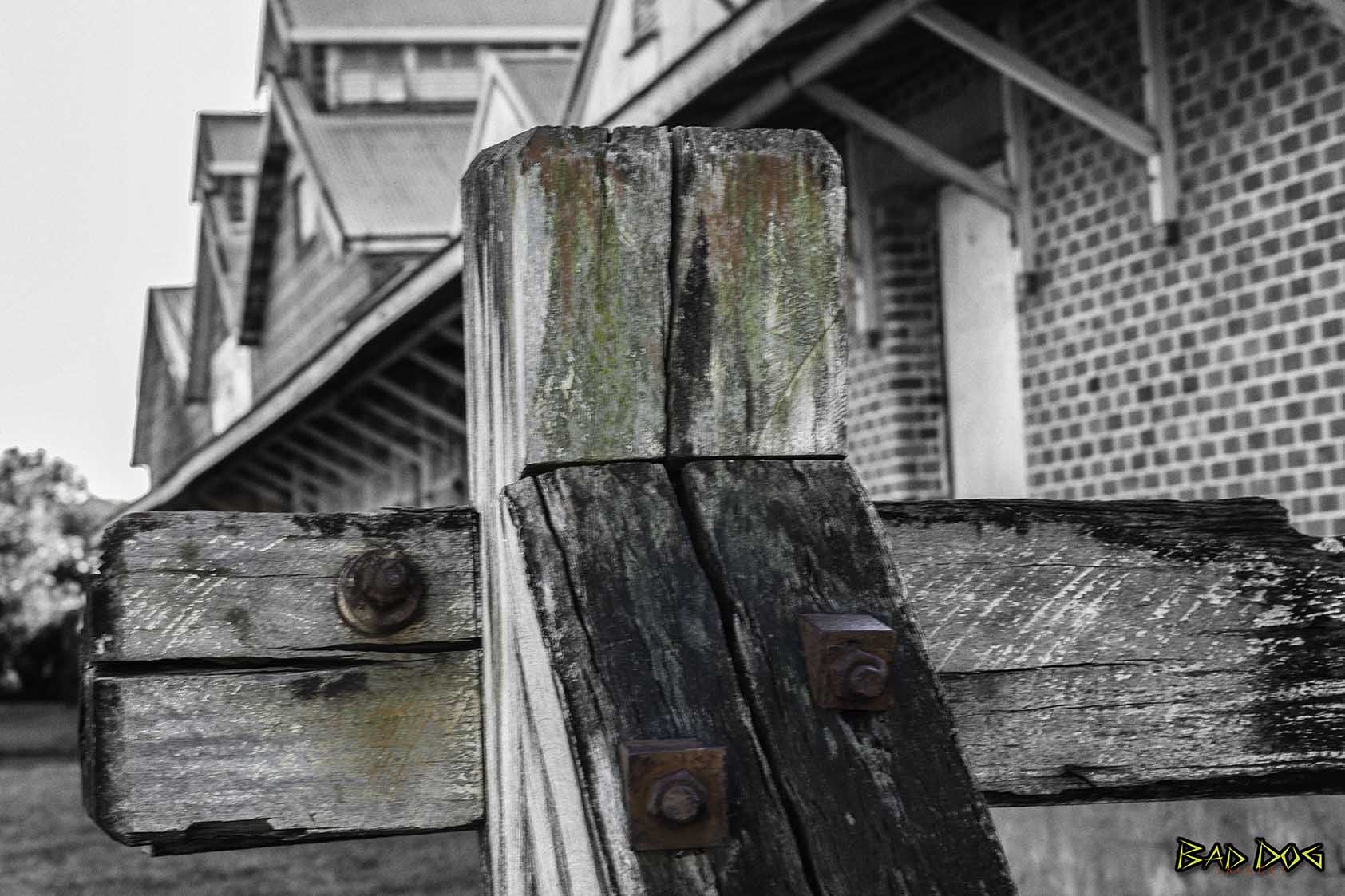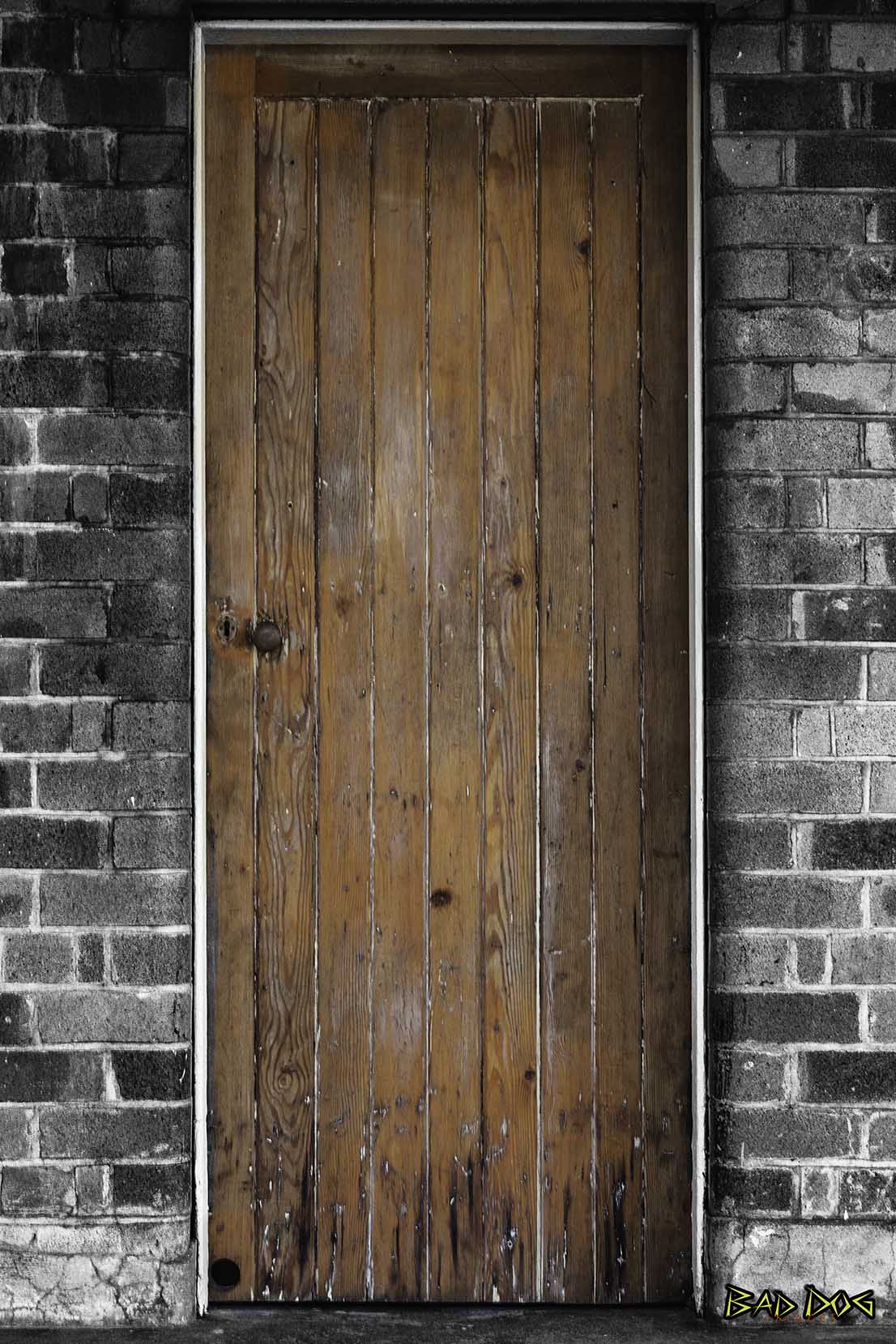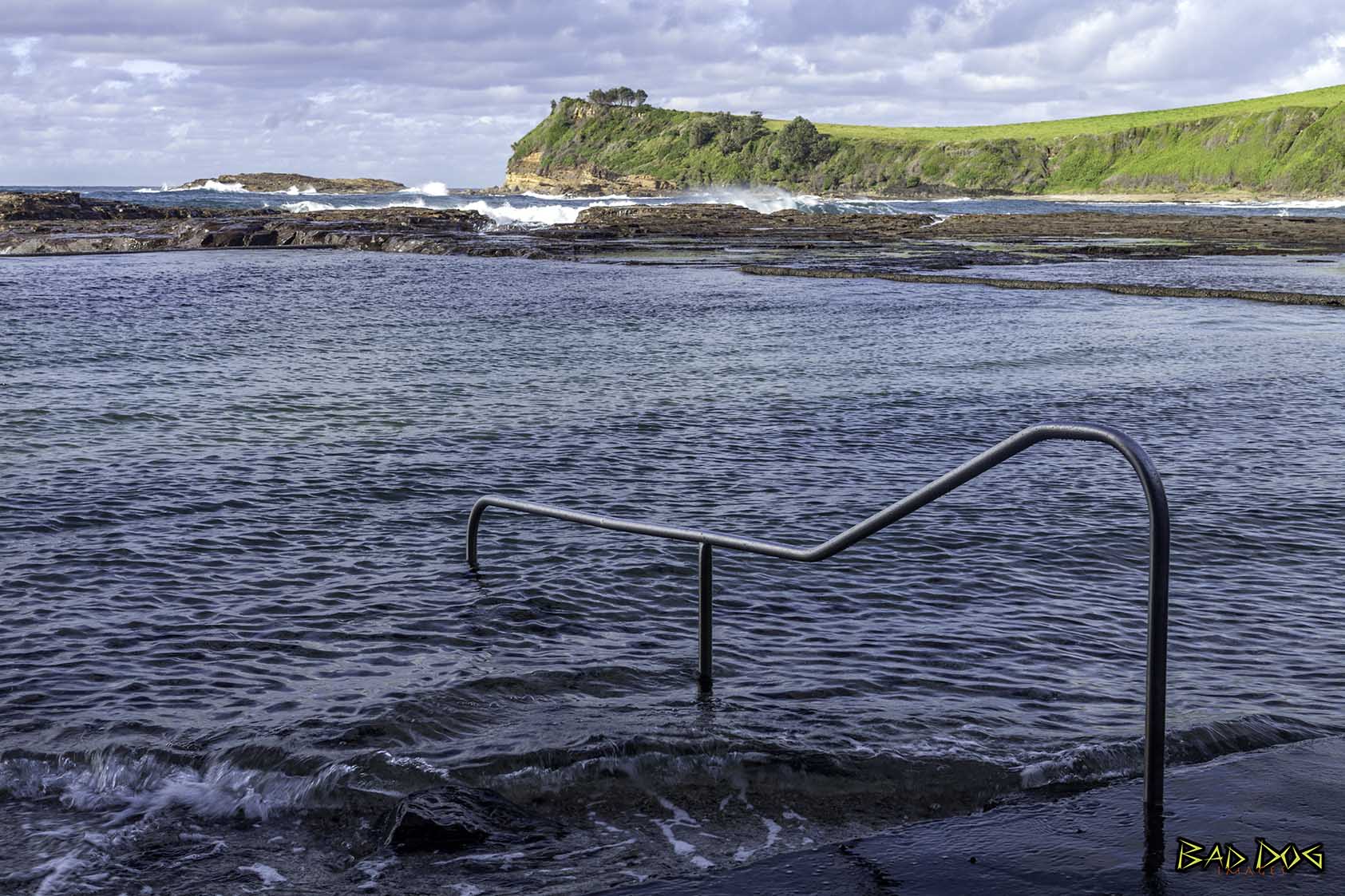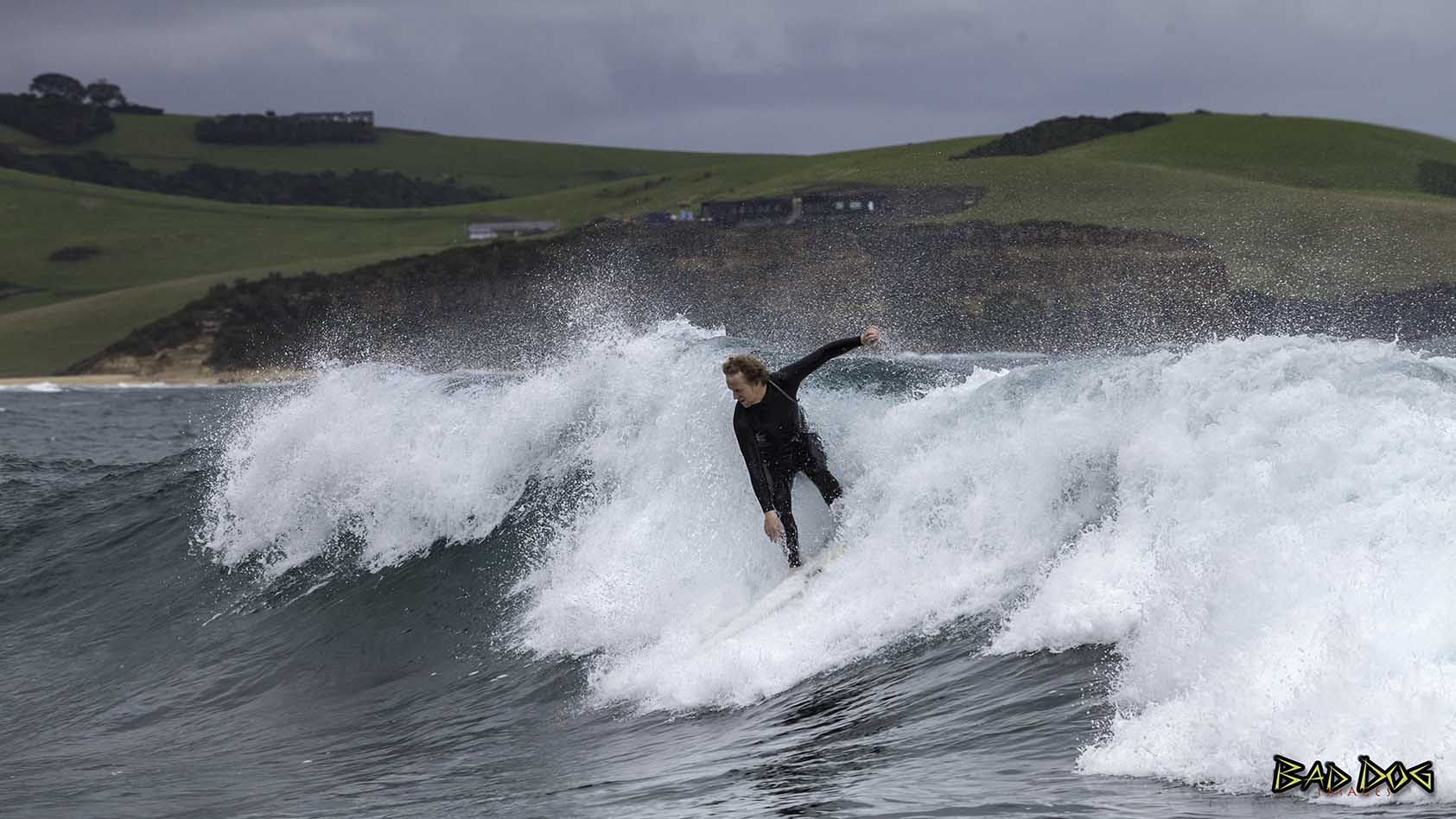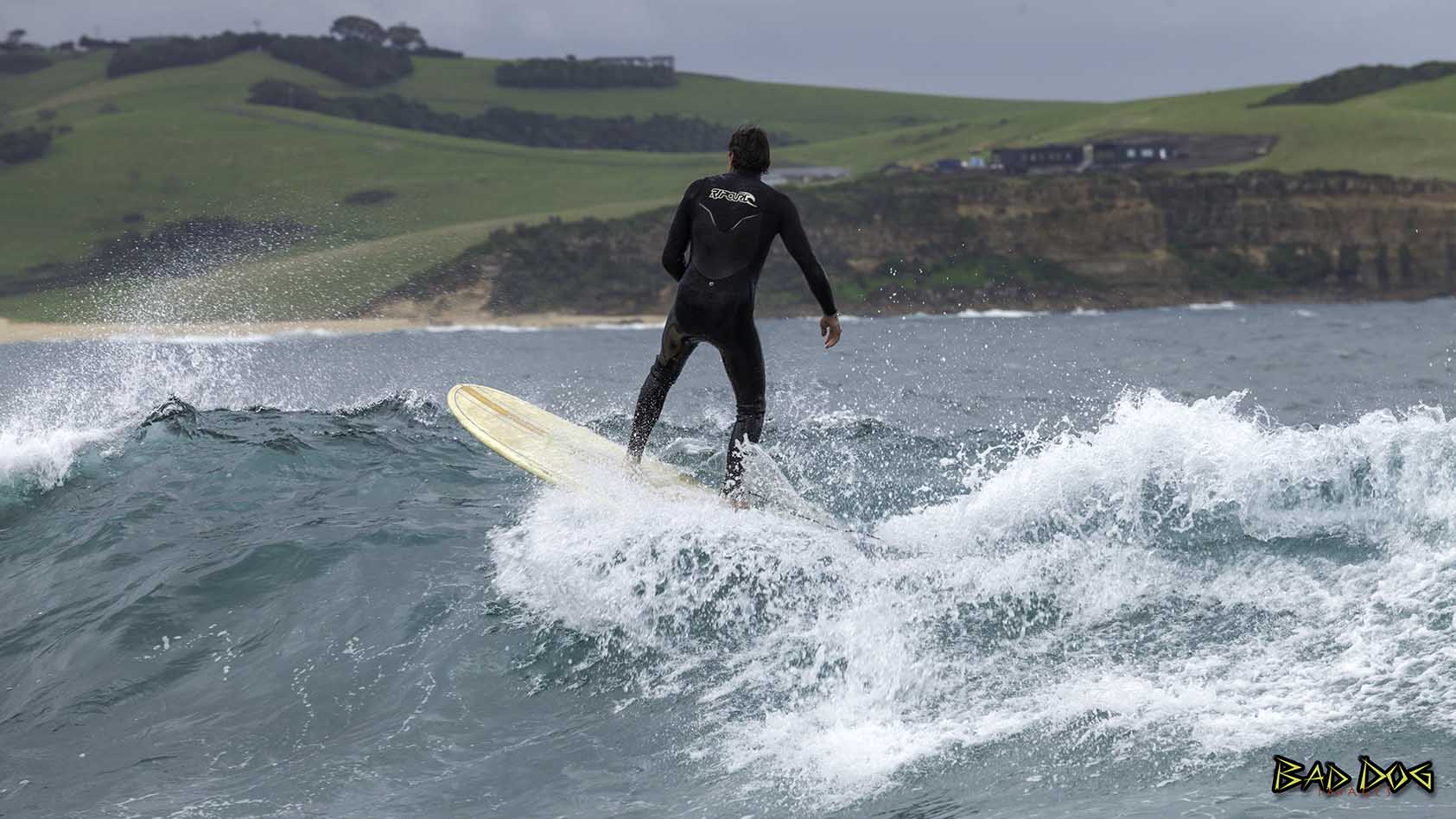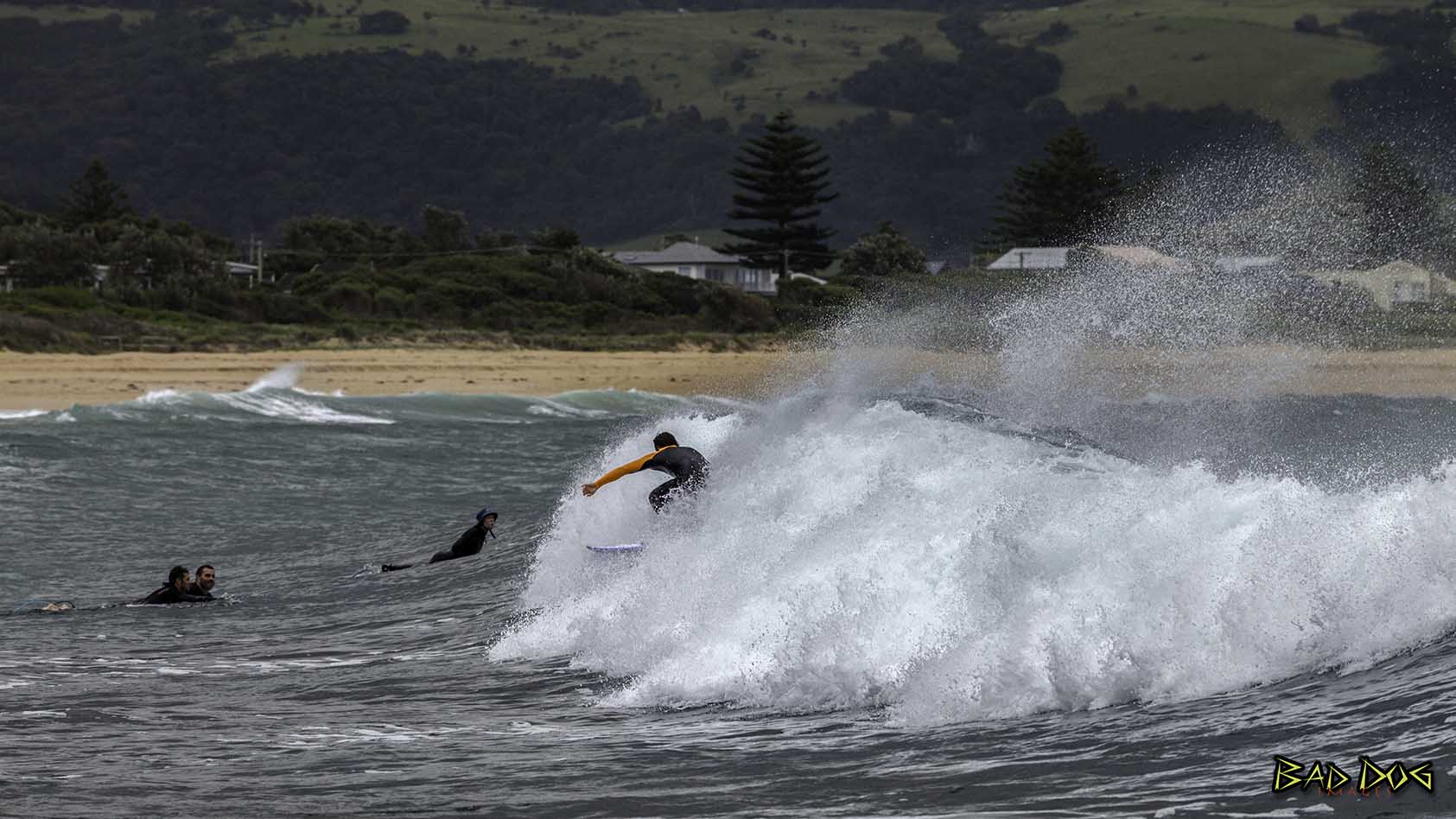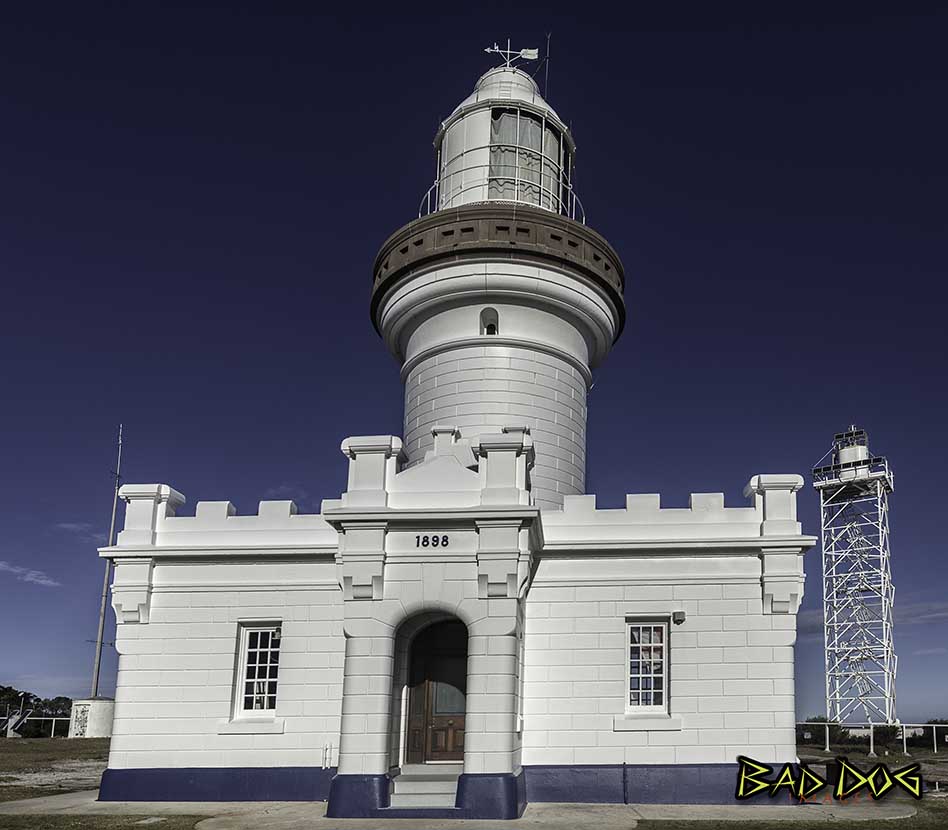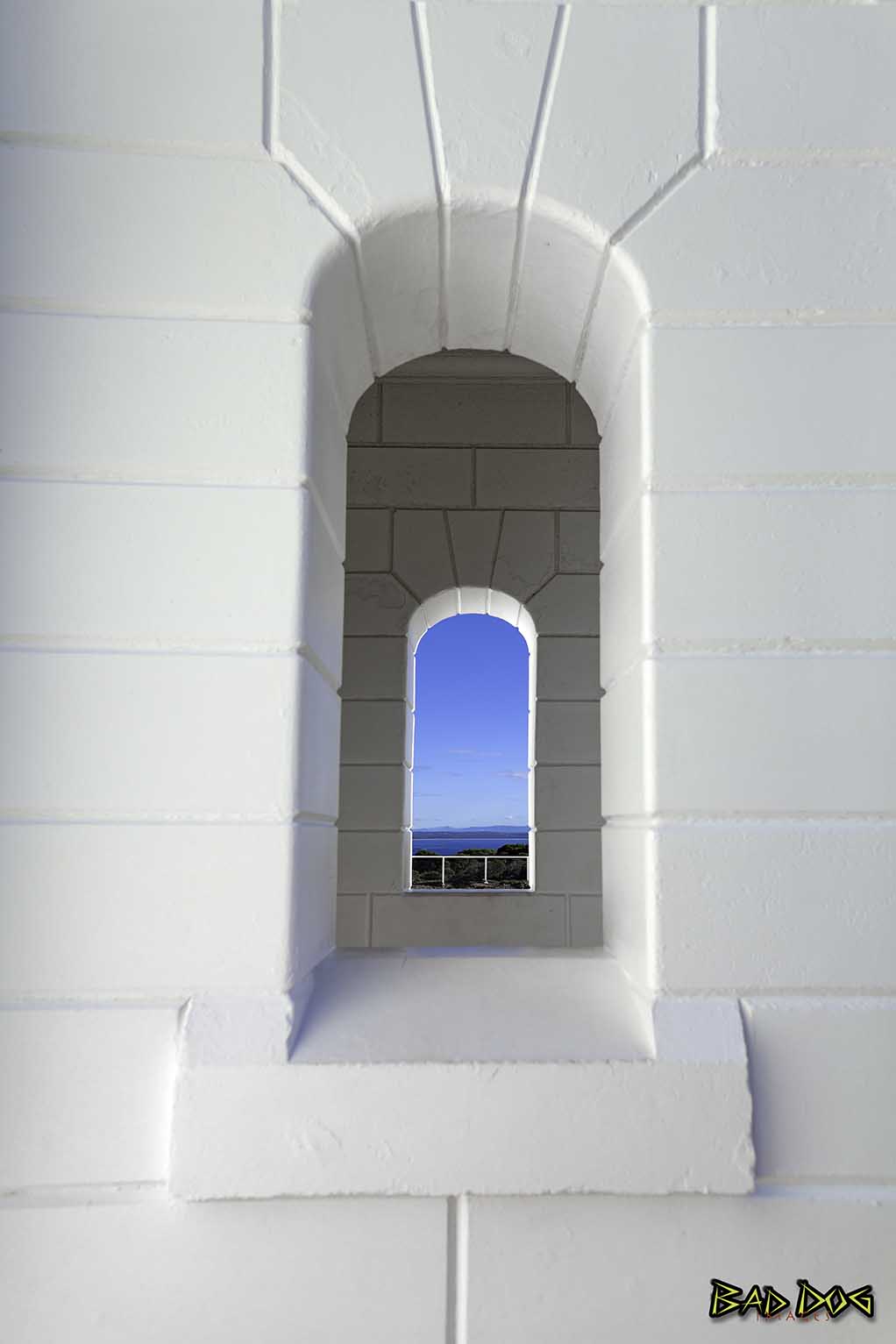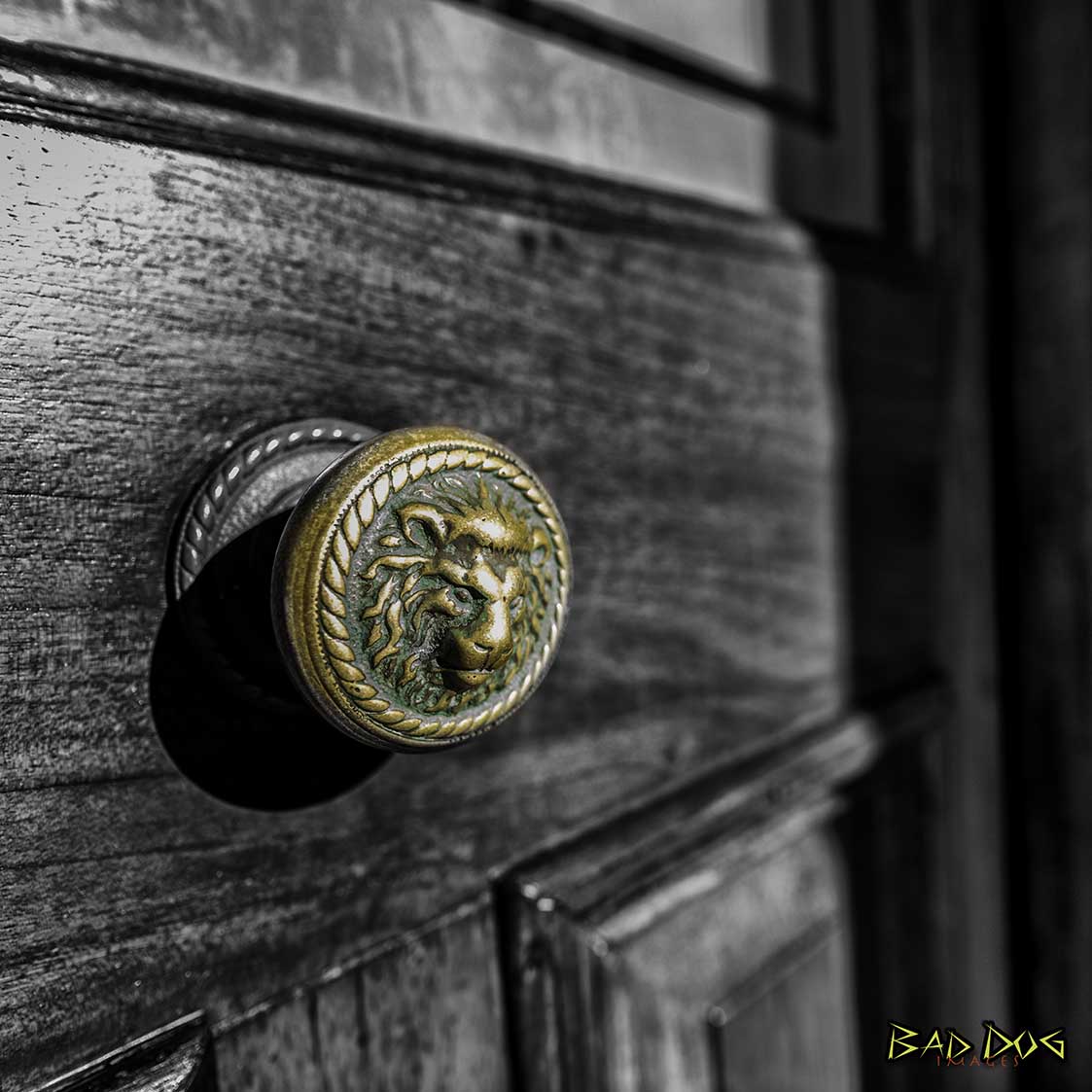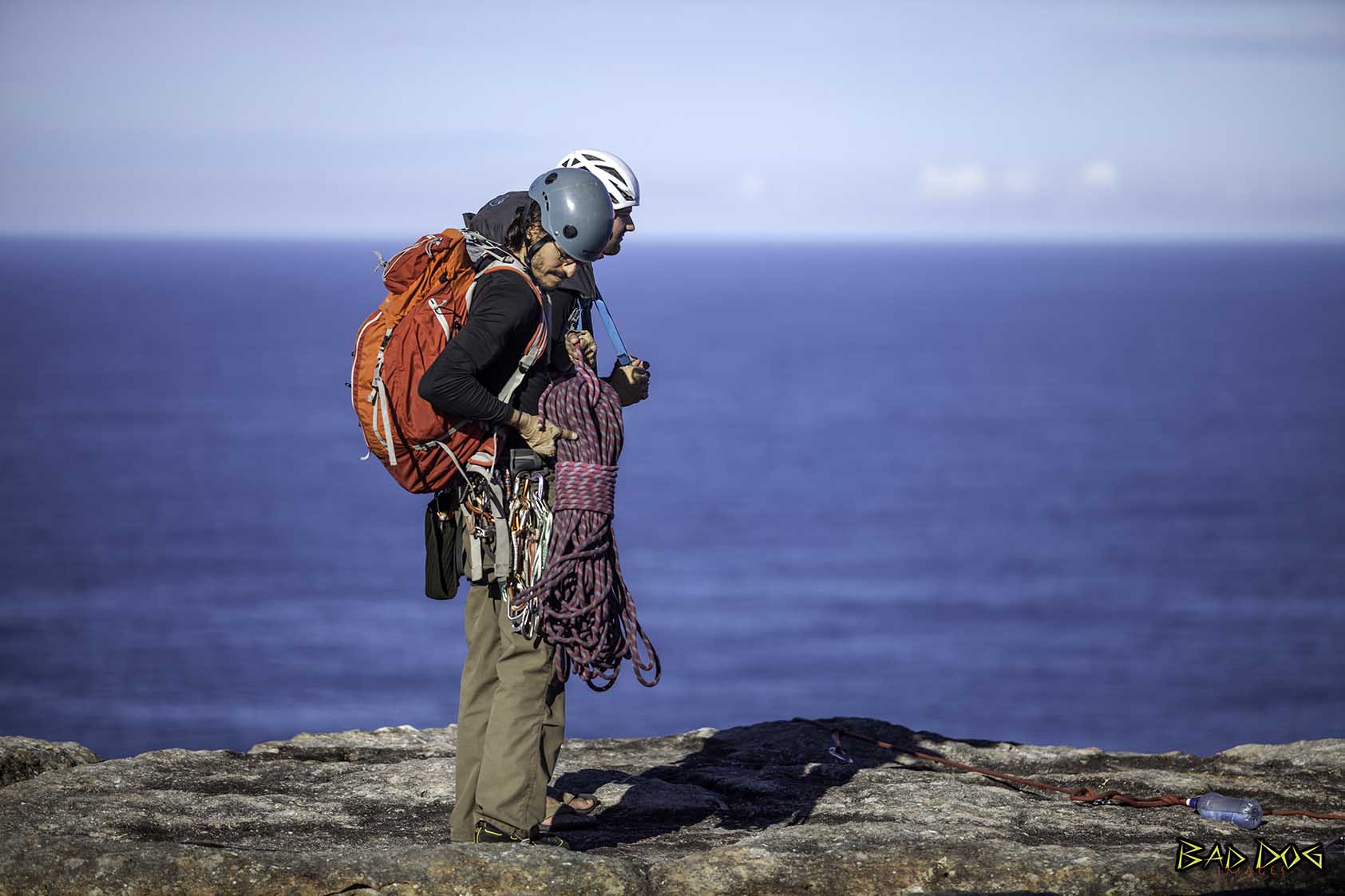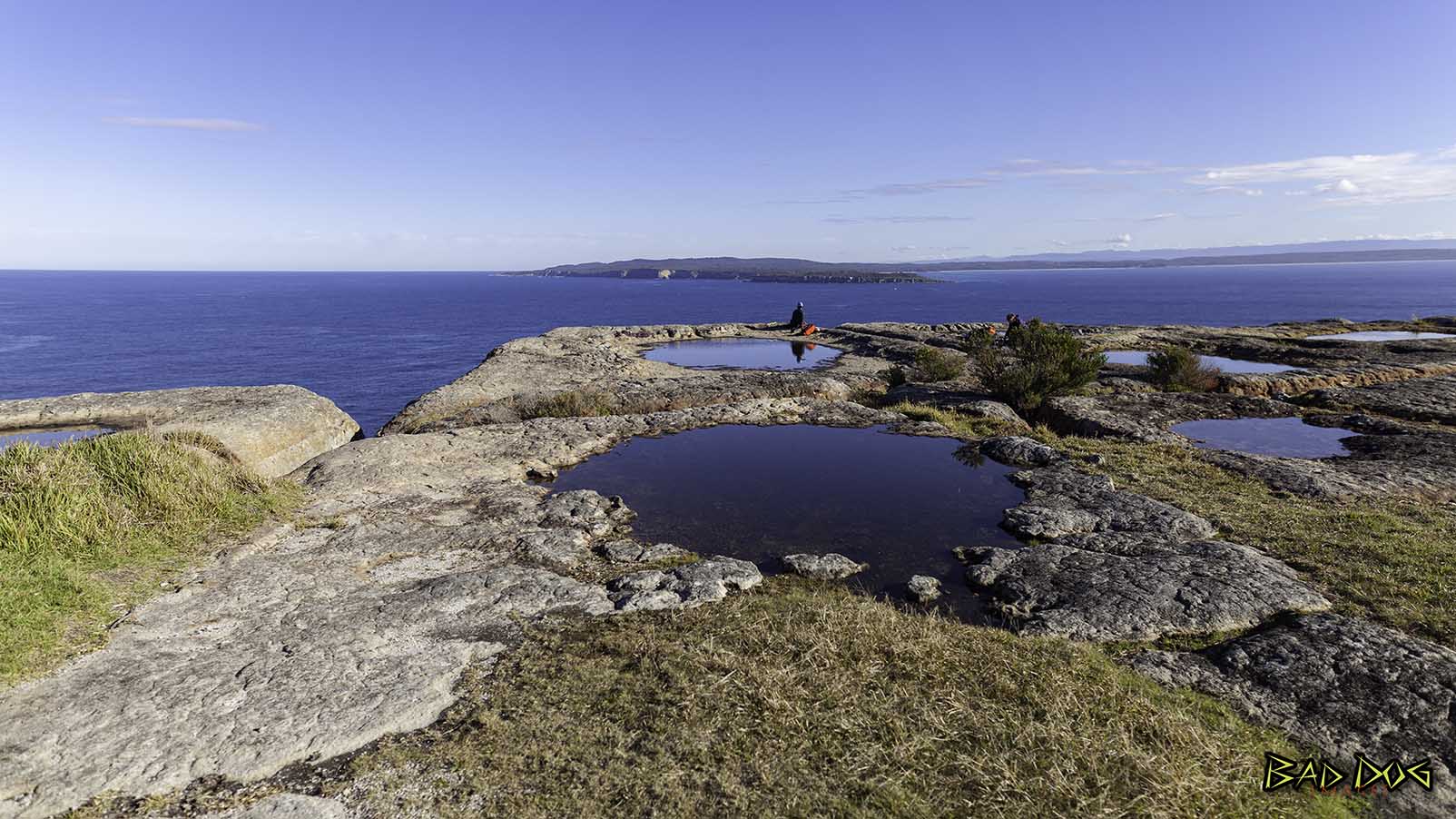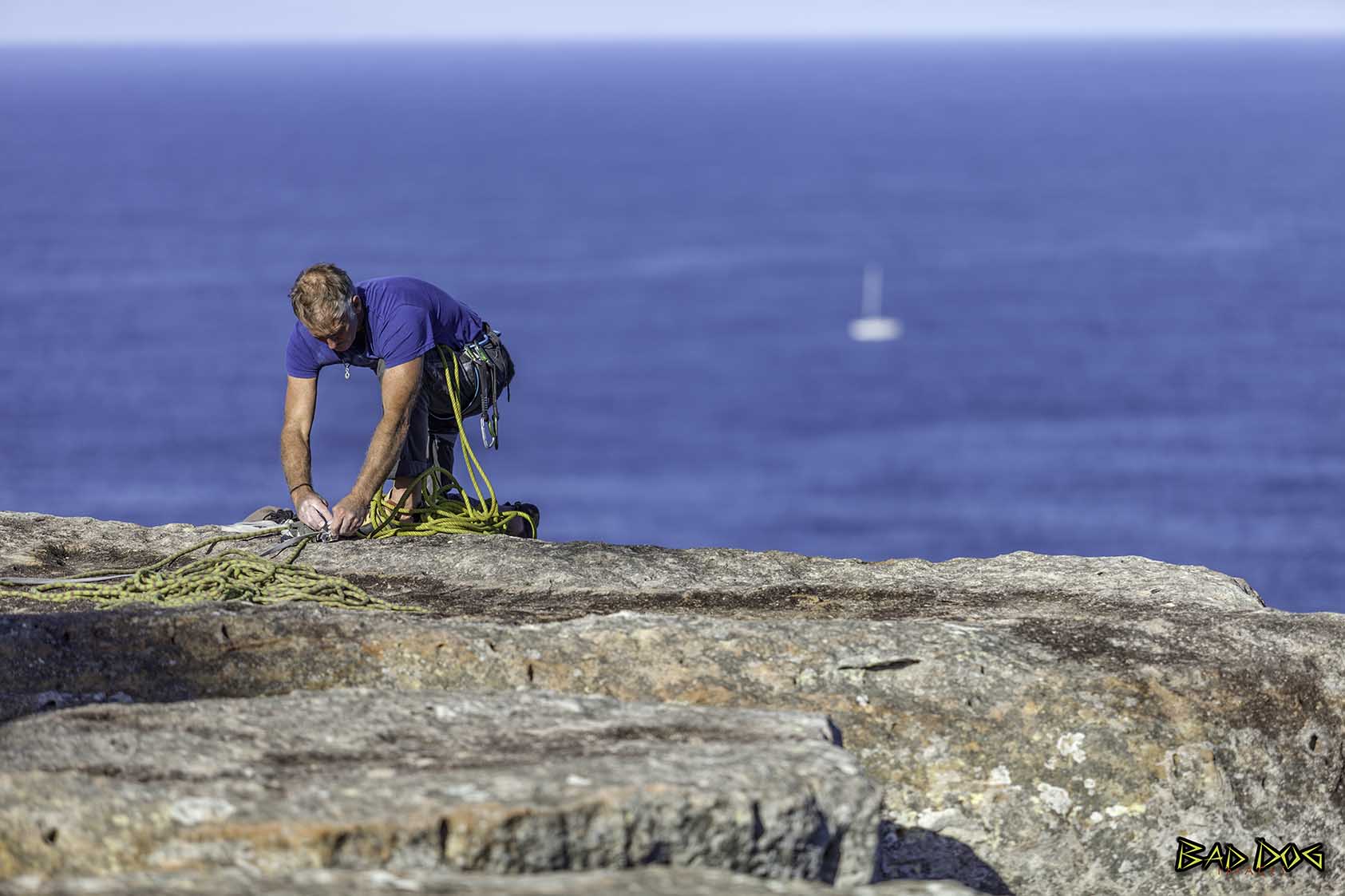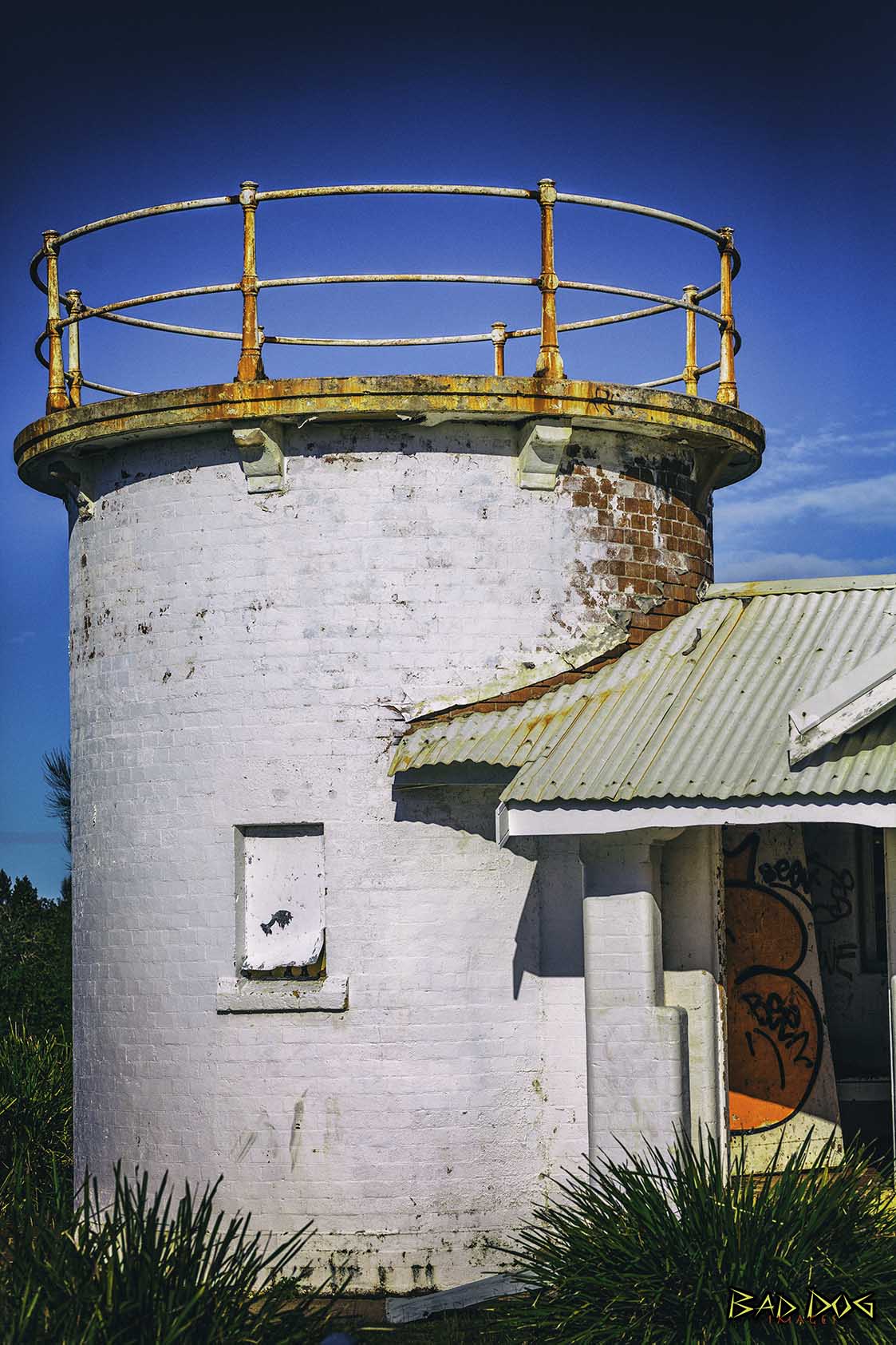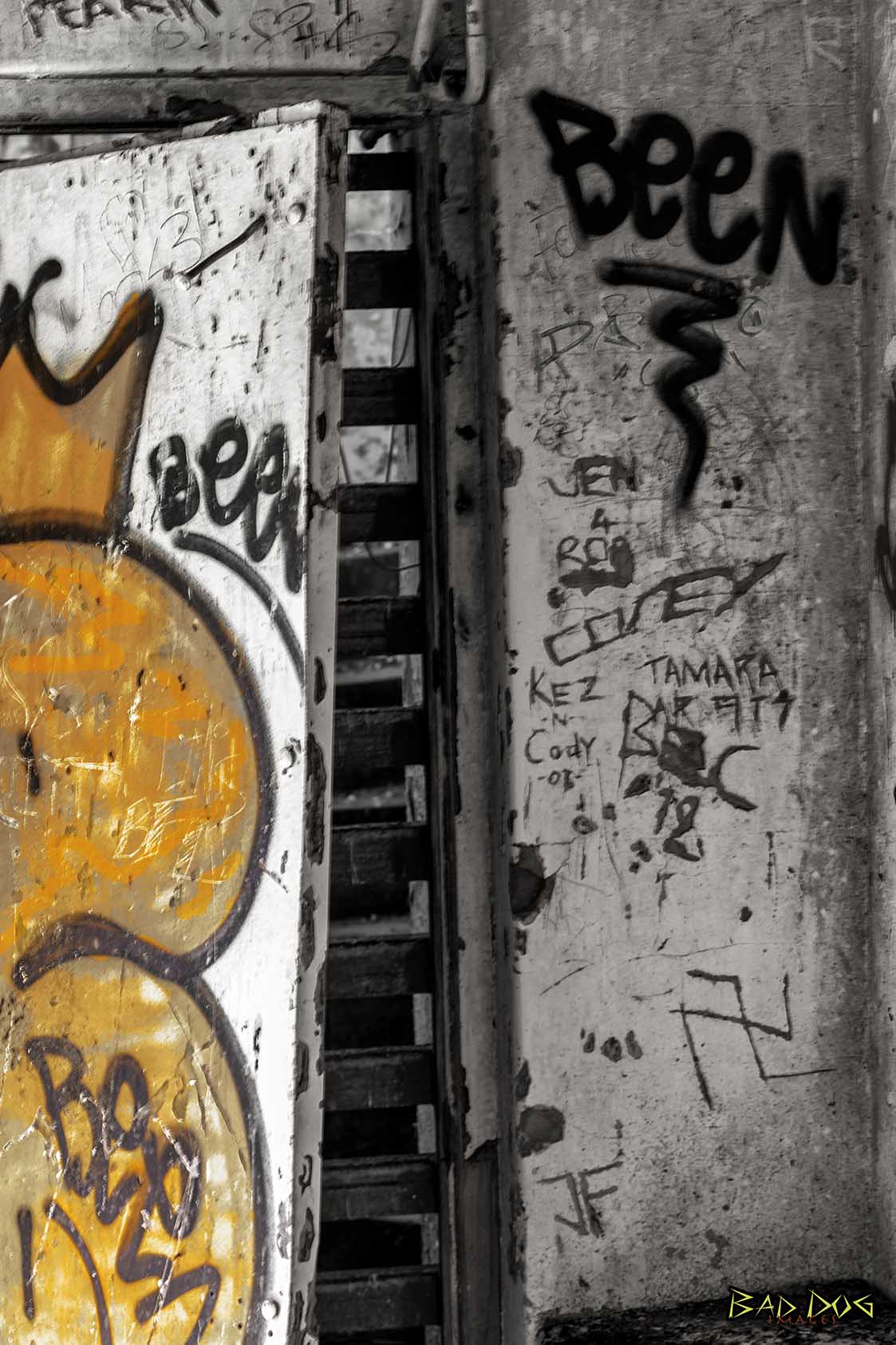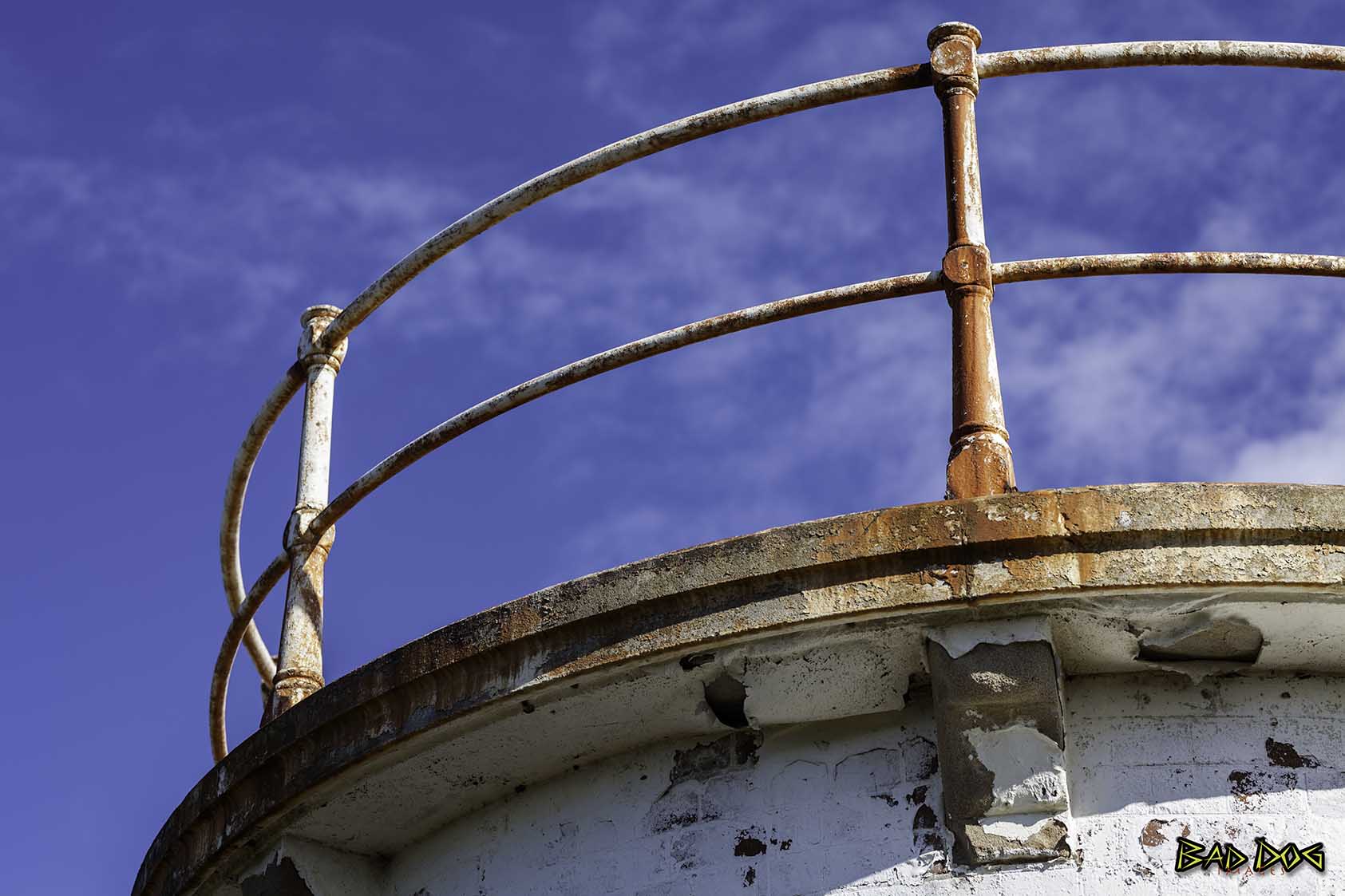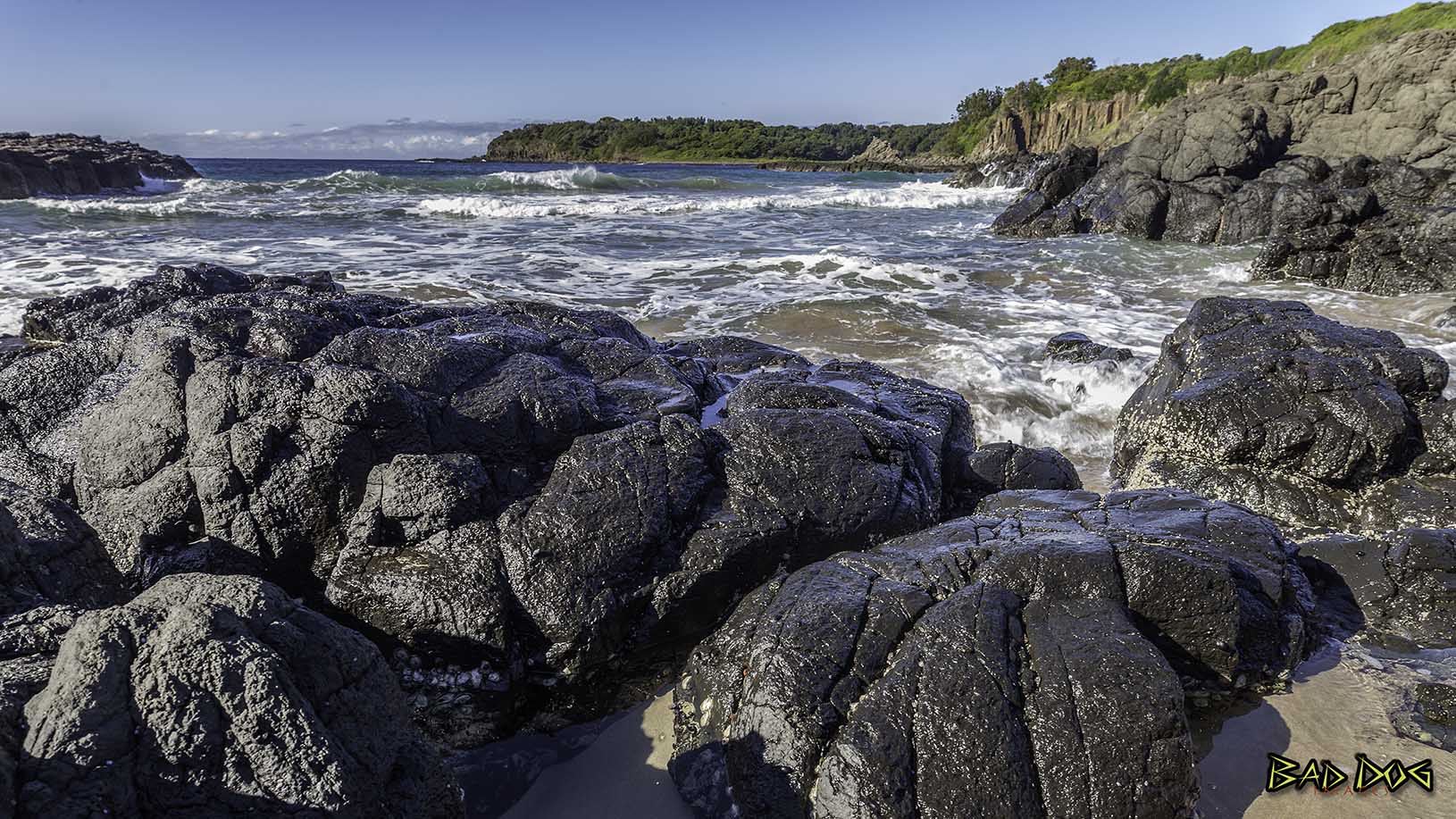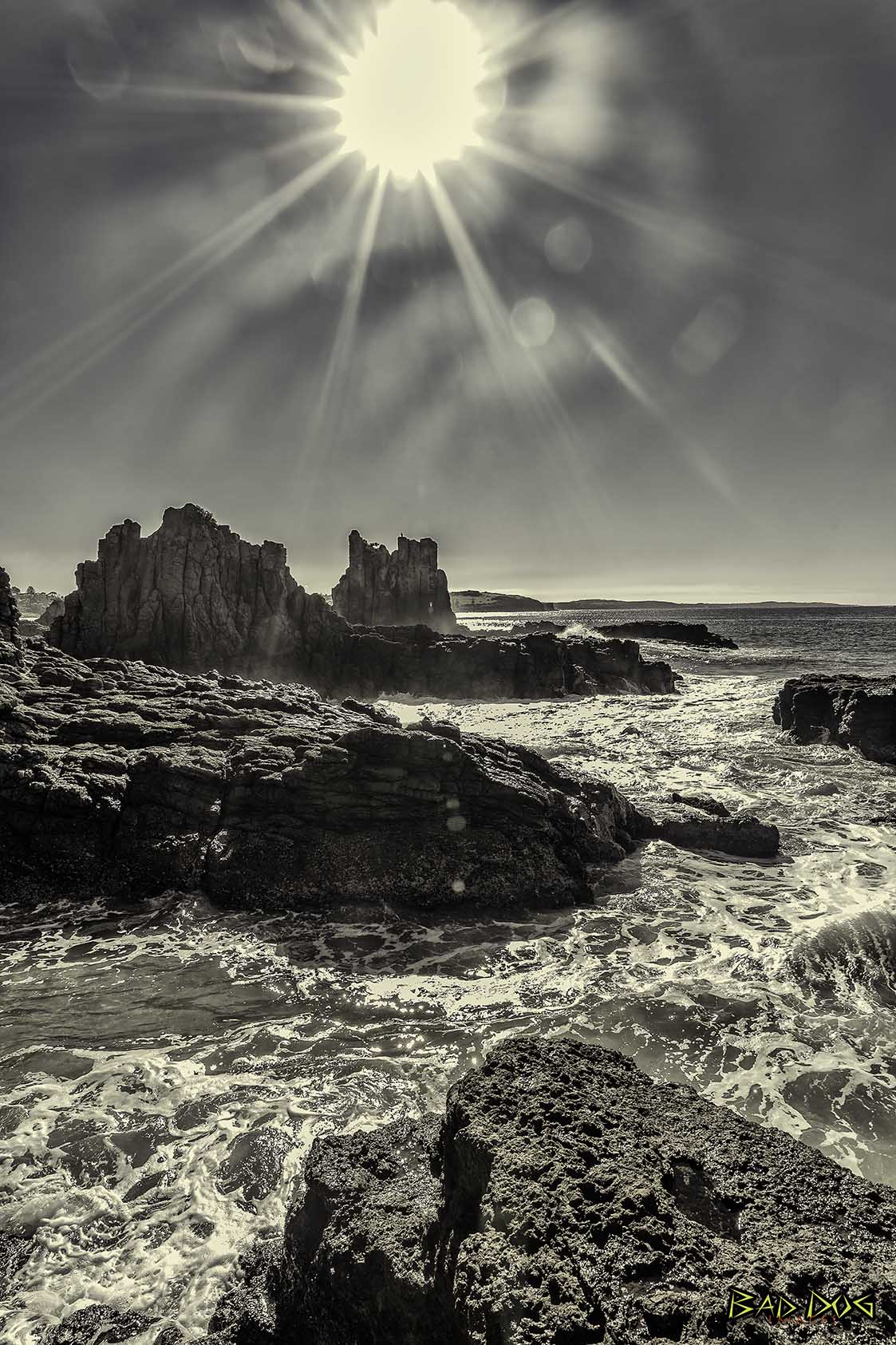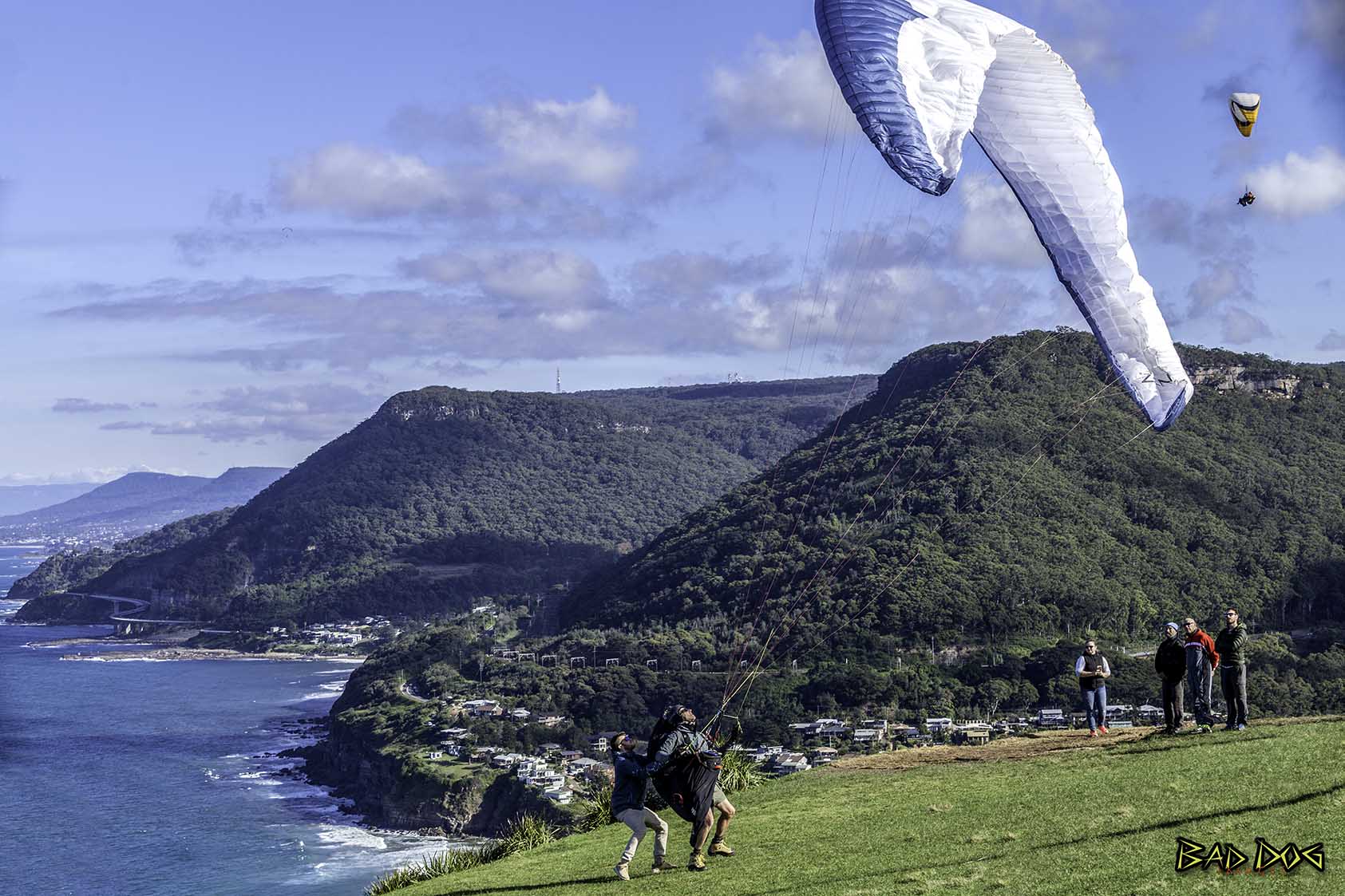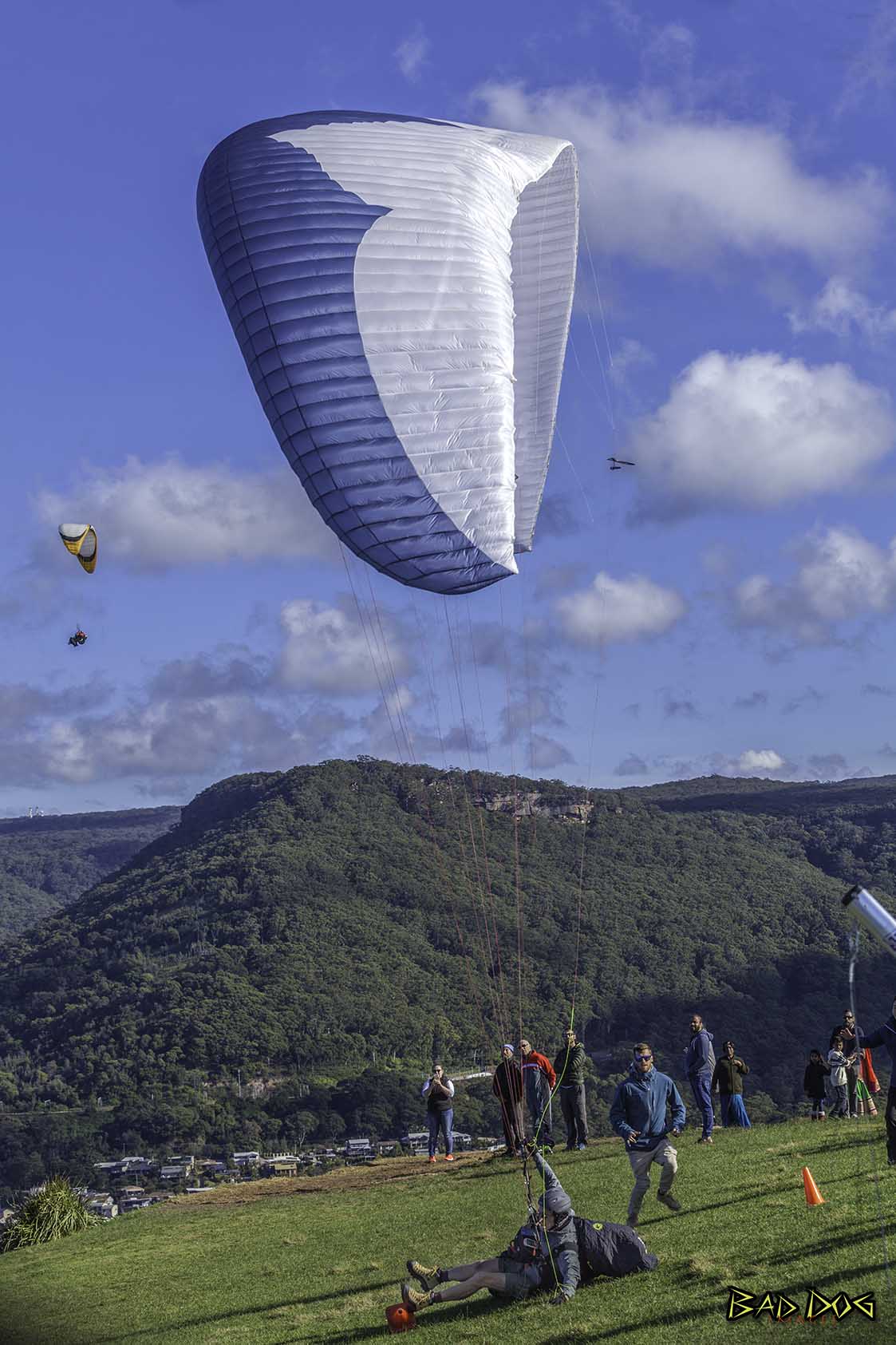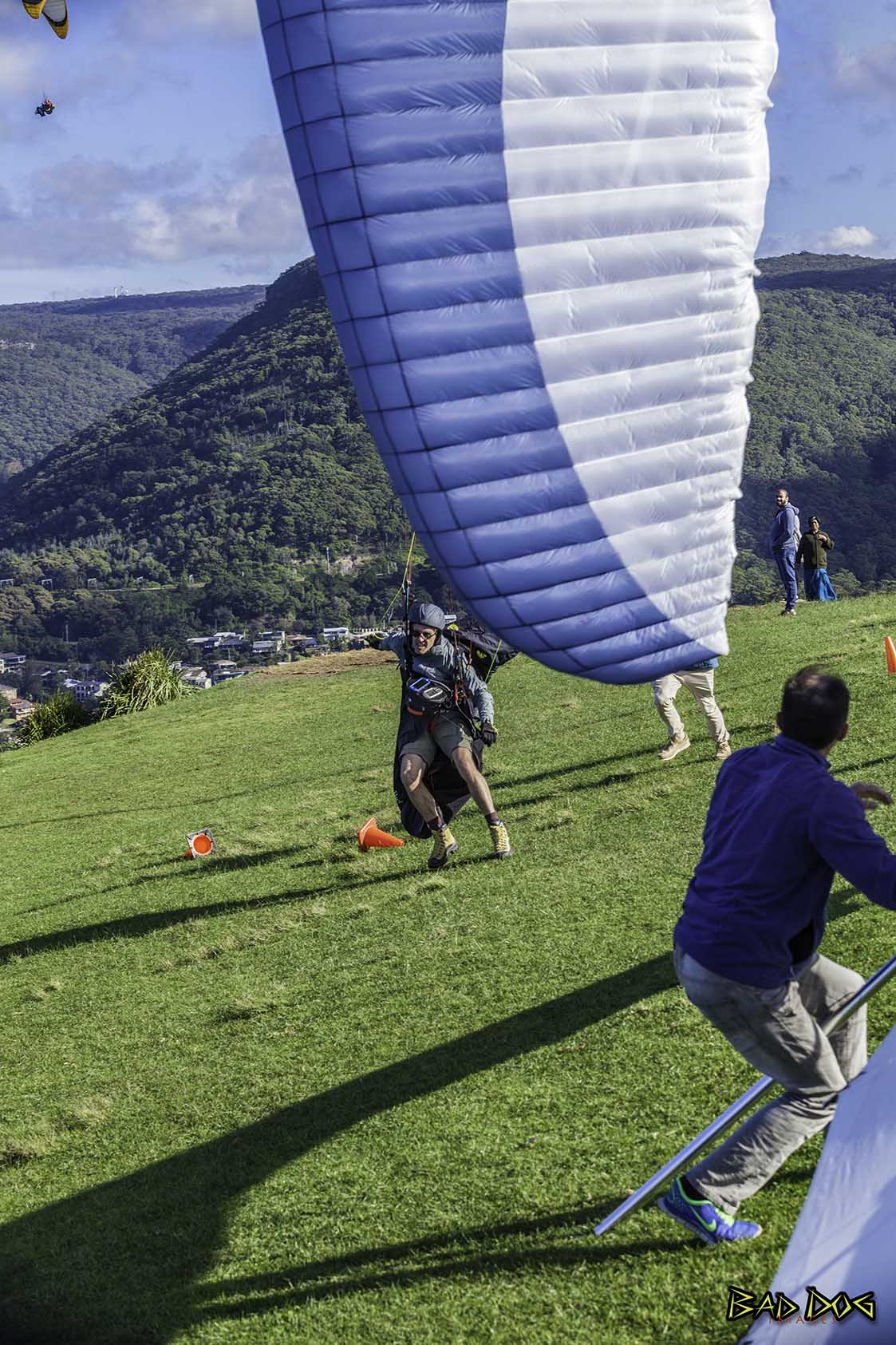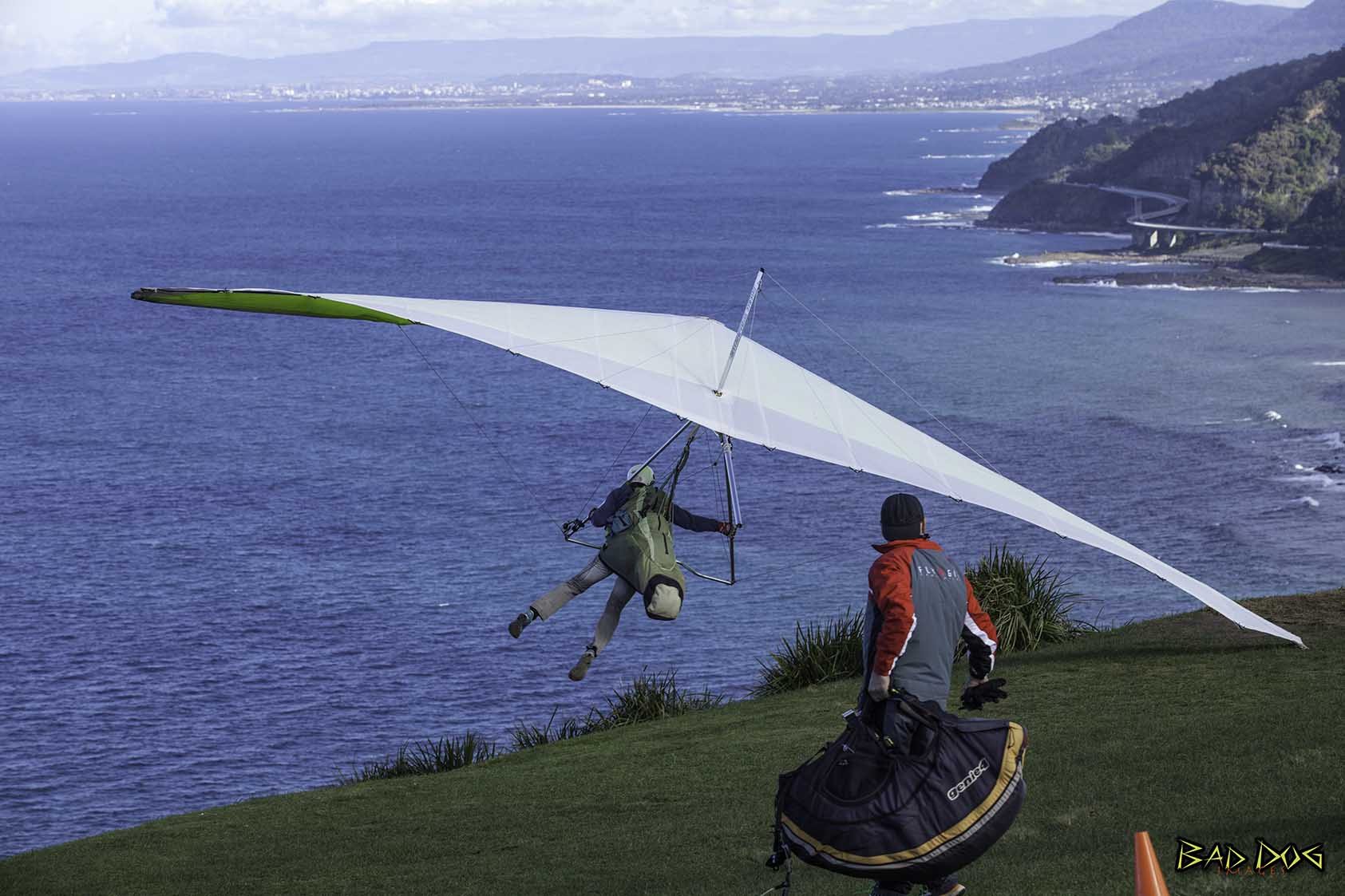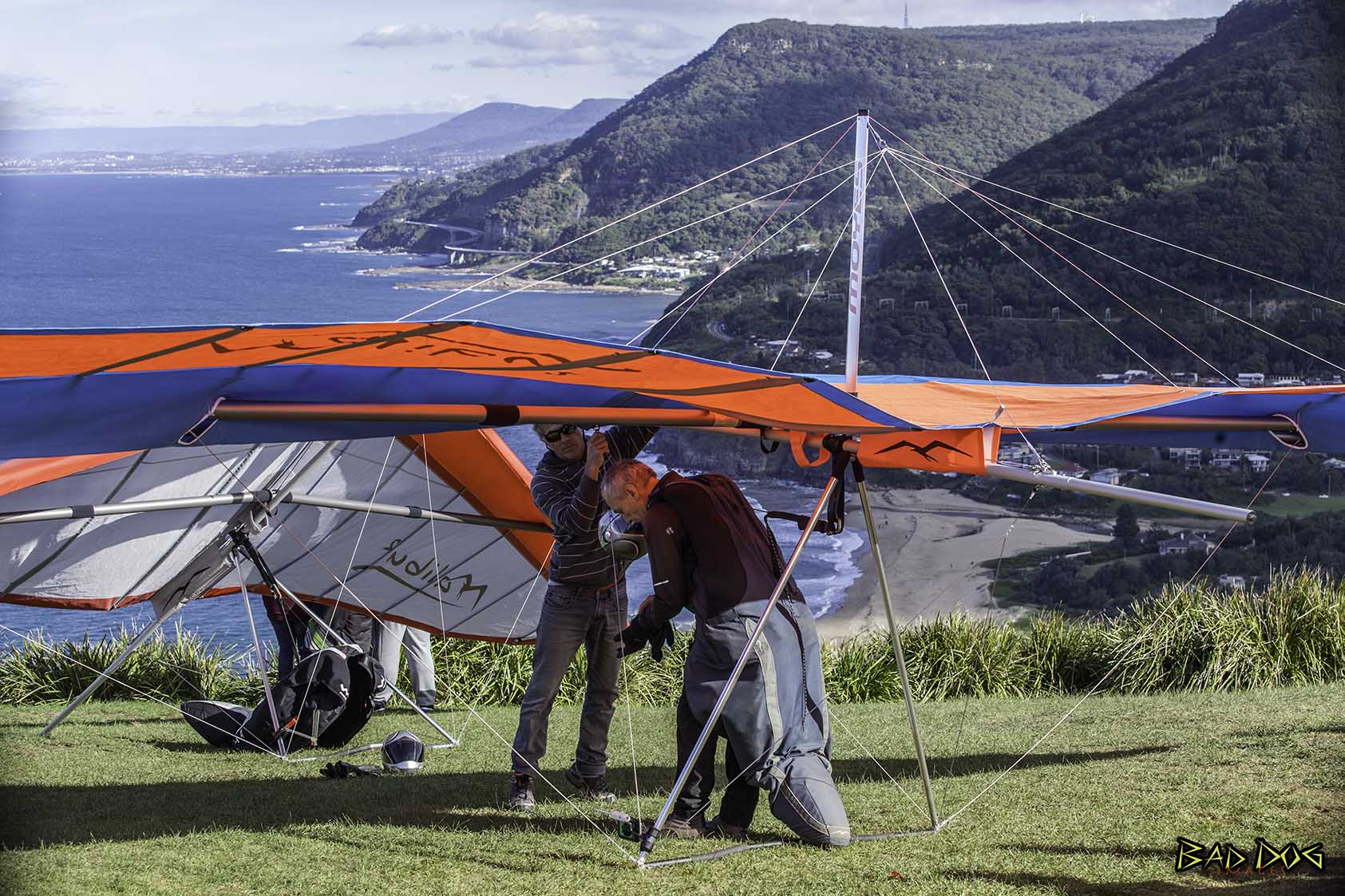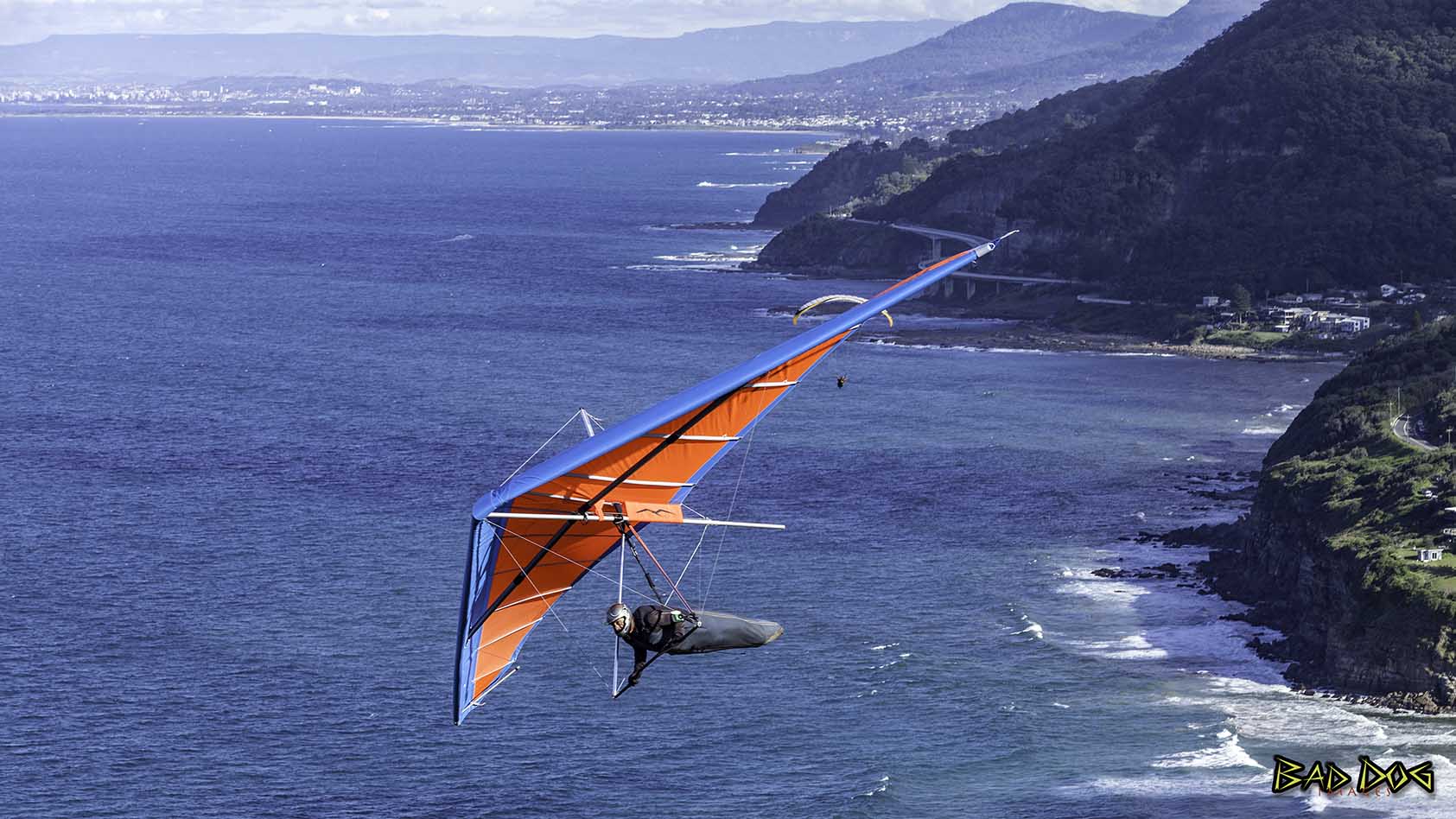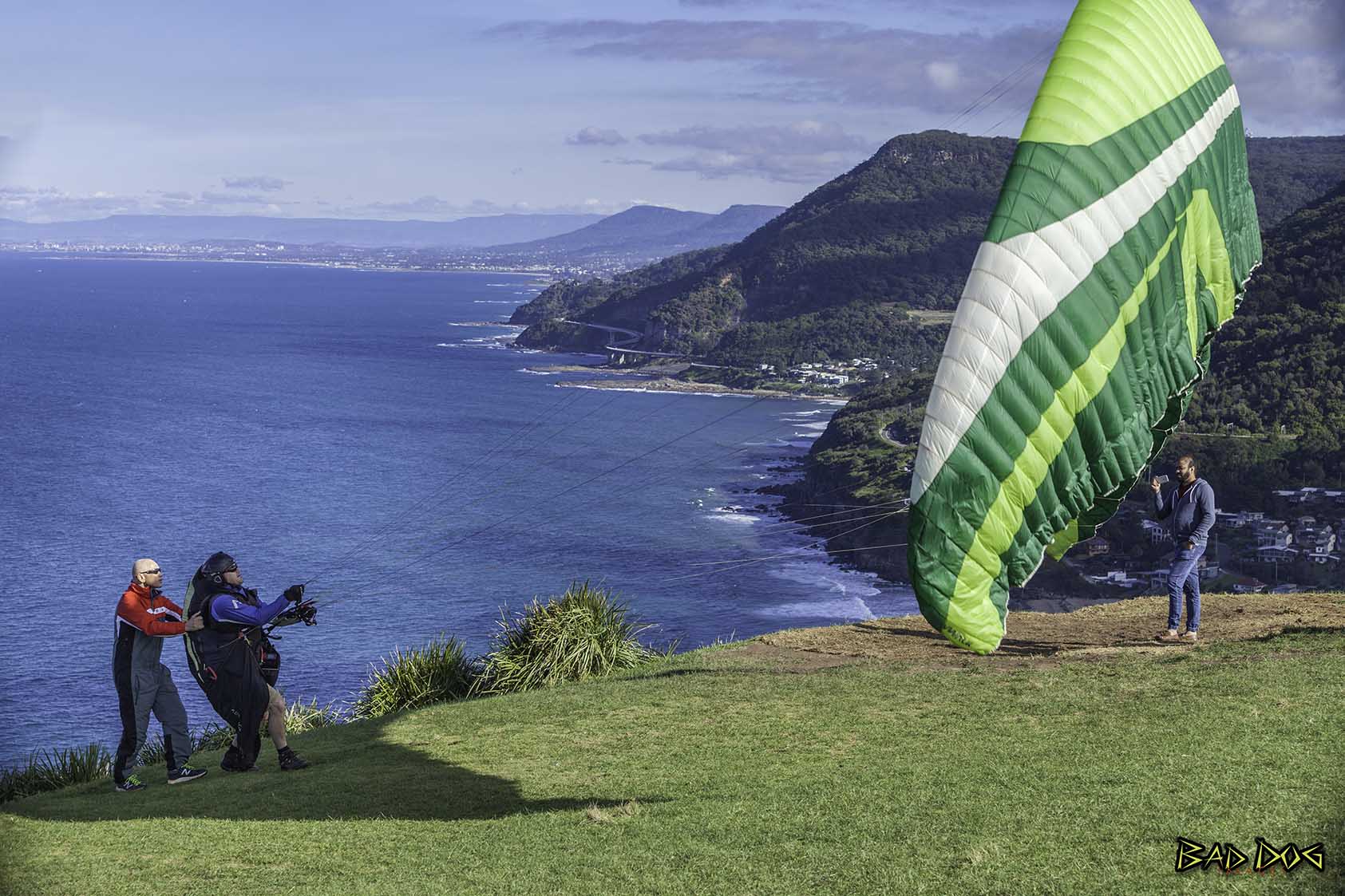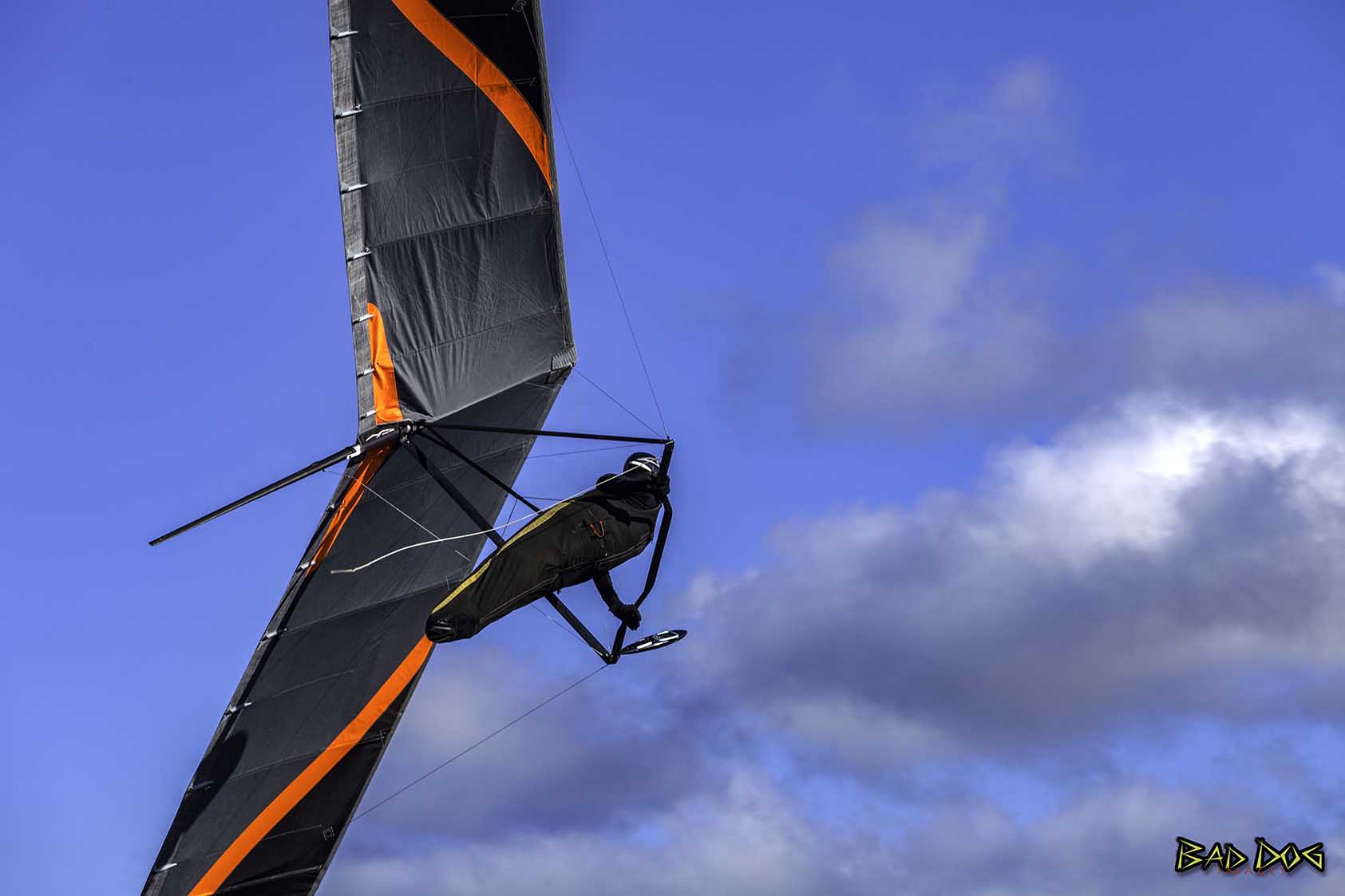Over the June long weekend we headed down to Gerringong, to spend three days exploring from Kiama to Point Perpendicular. And on the way home, a stop at Bald Hill to watch Hang Gliders in action.
Gerringong is a town located about ten minutes south of Kiama in the Illawarra region of New South Wales, In the Municipality of Kiama. The first European settlers were red cedar cutters, who were first recorded as having visited and logged in the area in 1814. As in much of coastal New South Wales, the cleared land was used for dairy farming and cedar cutting died out, as the cedar trees disappeared. Dairy farming became the predominant primary industry and remains so to this day. Gerringong had a small boat harbour used for the export of cedar and dairy produce.
In February 1888 the Gerringong Co-Operative Dairy Society was formed, and until it closed c2000, it was the oldest continually-operating dairy co-operative in Australia. The Co-operative began operations in a timber building erected by J B Taylor on the site of the present Mayflower Retirement Village. In June 1908 the Co-op was transferred to a brick building near the local railway station. Gerringong station opened on 2 June 1893. With the extension of the line from Kiama to Bomaderry, it was now possible for the co-op to have its own rail siding and it was decided that cartage costs would be cheaper if the factory was sited closer to the rail line. A dead-end siding was opened for the factory on 7th September 1907. A produce store was added in 1935, and the rail siding was extended and completed in 1936.
This allowed the direct transfer of milk to the South Coast Milk Train from its own sidingHardware, building supplies and other merchandising outlets appearing in the 1970’s, with a further extension in 1982. The siding consisted of a single lead trailing to Sydney bound trains. This meant that it was easy to shunt to pick up loaded wagons bound for Sydney, but not easy to leave empty wagons from Sydney.
A special method was therefore used to shunt the siding in the Nowra bound direction.
The train would stop before the turnout to the siding and both ends of the milk wagon(s) were uncoupled. The train would rush forward, giving the milk wagons a momentary tug, and as soon as the front part of the train had cleared the turnout, the turnout would be changed into the siding and the milk wagons would coast into the siding where the guard would apply the brakes at the appropriate time.
Information Sourced :
State of New South Wales and Office of Environment and Heritage under. Creative Commons.
A boat ramp for fishermen, and a tidal pool with picnic area can be found at the former boat harbour that had a jetty.
Werri Beach
is distinguished by having point breaks at both ends of the beach, so there's often a nice wave peeling nicely off either the north or south headland. Smooth even when the summer nor'easter is blowing, the north point starts to break across the rocky reef that extends from the headland, then generates a fatter wave closer to shore that's beloved of long-boarders. Beach breaks to the south are dependent on variable sandbanks. The south headland is the spot in a southerly swell and wind.
Point Perpendicular
is a point at the southern tip of the Beecroft Peninsula and at the northern entry to Jervis Bay, in New South Wales. The historic lighthouse was active from 1889 to 1993. It is believed to be the first lighthouse in New South Wales which was built of precast concrete blocks.
The light was replaced in 1993 with a skeletal tower which is active. Point Perpendicular Lighthouse was built to replace Cape St George Lighthouse which was inadequately located on the southern entrance to Jervis Bay, a fact which was apparent since its construction in 1860. Suggested places for replacing the light were on Bowen Island or Crocodile Head. Point Perpendicular was chosen in September 1883 by Colonial Architect James Barnet and Captain Francis Hixson of the Marine Board.
The plans for the lighthouse were signed on 18 March 1897. The lighthouse was designed by James Barnet's successor, Charles Assinder Harding, who also later designed Cape Byron Light and Norah Head Light, in a style similar to Barnet's.
Tenders were called on 15 April 1897, and by September 1897 construction has started. Most of the materials were landed at Bindijine Wharf, about 8.0 kilometres (5 mi) northwest, which was constructed in 1898. Horse and cart were then used to transport them to the site.
The light was first lit on 1 May 1899. The original light source was a vaporized kerosene lamp with an intensity of 100,000 cd and a visible range of around 33 kilometres (21 mi). The apparatus installed was a massive Chance Bros. 920 millimetres (36 in) three faceted 1st order Fresnel lens, weighing 33 tonnes (32 long tons; 36 short tons), and the original light characteristic was a white flash every 20 seconds (Fl W 20s). The lens is still installed in the lighthouse.
In 1909 the light source was first upgraded, to an intensity of 222,000 cd. It was further upgraded in 1923, to an intensity of 316,000 cd.
In 1964 the light was electrified, 2 diesel engines serving as the power source.
On 5 July 1993 the light was shut down and replaced with a fully automated, solar powered lamp on top of a lattice skeletal tower. At that time the light was a 120 V, 1000 W quartz halogen lamp, visible to a range of 26 nautical miles (48 km; 30 mi) and the light characteristic was a group of three white flashes every twenty seconds (Gr(3) W 20s).
The future of the lighthouse is unclear. Though it was agreed upon that access to the historic lighthouse would continue, the Department of Defence, the agency governing the site, originally fenced it and access was limited. It is unclear what the exact restrictions are at this point. The structures on the location were put on sale, and the outcome of this is also unclear.
Point Perpendicular is also a great spot for rock climbers.
Crookhaven Heads Lighthouse
Crookhaven Heads Lighthouse located at Crookhaven Heads, a headland on the south side of the entrance to the Shoalhaven River, north of Culburra Beach, New South Wales. The original lighthouse at Crookhaven Heads was constructed of timber in 1882 and located as part of the Shoalhaven Pilot Station with a Mr. Thomas Bishop being the first operator. A new lighthouse to the south of the mouth of the Shoalhaven River was built in 1904 and the old wooden lighthouse was demolished. The walk around the headland adjacent to the historical lighthouse follows a well-developed track and provides good views of the whole of the Crookhaven Bight and Shoalhaven River.
Cathedral Rocks-Kiama
Located just three kilometres north of Kiama at the southern end of Jones Beach, this distinctive rock formation is part of the geologically fascinating coastline. Cathedral Rocks, has lured sightseers since 1890. These volcanic rocks, while intensely hard, have many joints. These joints have been eroded for many years, leaving these mysterious rock formations.
Bald Hill
Bald Hill is a major tourist destination commonly visited for sight seeing, hang gliding and paragliding. With an elevation of approximately 300 metres (980 ft) , Bald Hill is one of the best known and most popular lookouts in the Illawarra region providing panoramic vistas across the Illawarra escarpment and over the Illawarra plain and the Tasman Sea of the South Pacific Ocean.
Lawrence Hargrave. (29 January 1850 – 6 July 1915) was an Australian engineer, explorer, astronomer, inventor and aeronautical pioneer. He chose to live and experiment with his flying machines in Stanwell Park, a place which offers excellent wind and hang conditions and nowadays is the most famous hang gliding and paragliding venue in Australia.
Among many, three of Hargrave's inventions were particularly significant:
- Study of curved aerofoils, particularly designs with a thicker leading edge.
- The box kite (1893), which greatly improved the lift to drag ratio of early gliders.
- Work on the rotary engine, which powered many early aircraft up until about 1920
